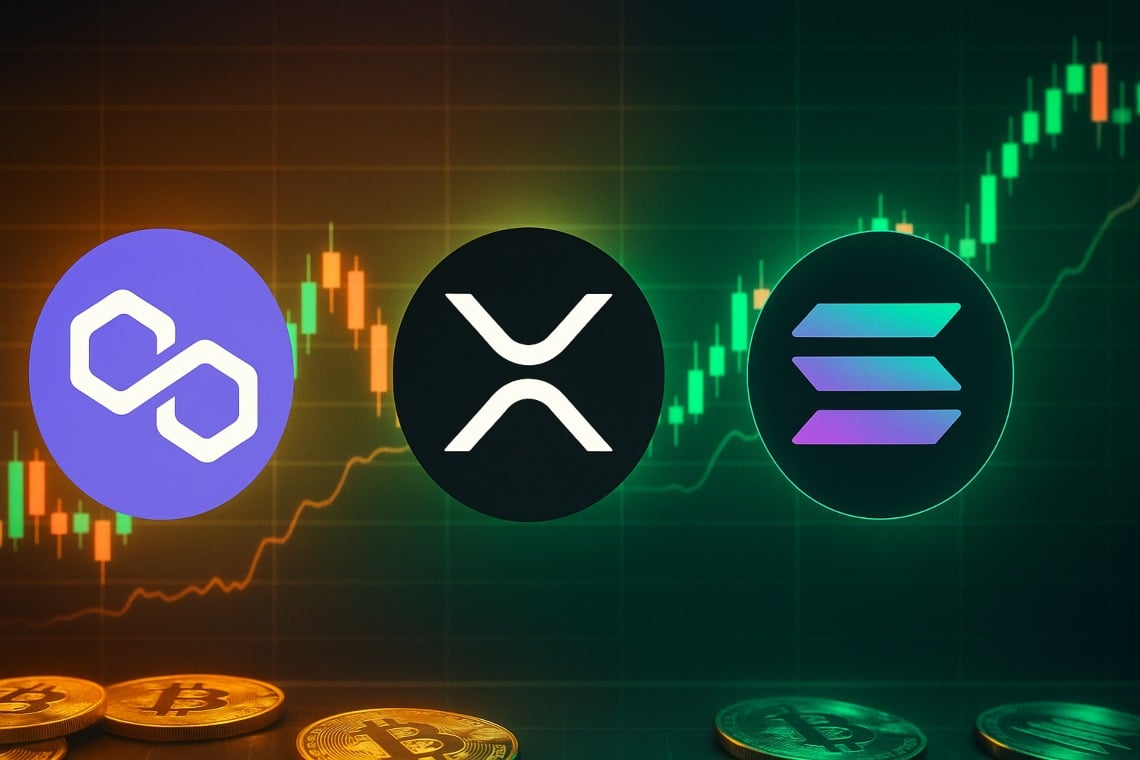POL (Polygon), XRP (Ripple) and SOL (Solana): price analysis

Although the crypto markets are going through a period of apparent lateralization, despite remaining a bit volatile, not all cryptocurrencies are performing in the same way.
Bitcoin and Ethereum are still the two main points of reference, dictating the general trend, but not all cryptos follow suit by slavishly replicating that trend.
Today, we analyze the price performances of POL (Polygon), XRP (Ripple), and SOL (Solana).
Price Analysis of Crypto XRP (Ripple), SOL (Solana), and POL (Polygon)
Let’s start with XRP, the cryptocurrency created in 2012 by the private company Ripple.
Over the years, XRP has consistently shown a certain resilience in the financial markets, so it is not particularly surprising that it continues to demonstrate it.
Of course, the electoral victory of Trump in the US presidential elections in November has completely changed the prospects for Ripple, and this fact has had consequences on the price of XRP that appear evident.
The SEC initiated the lawsuit against Ripple at the end of 2020, when the price of XRP had risen from $0.25 to $0.62, just as the latest major bull run of the crypto markets was beginning.
The news of the lawsuit brought it back below $0.30, and during the bull run it couldn’t go beyond $1.6, against a previous all-time high of $3.8 recorded in January 2018.
During the subsequent bear-market, the price of XRP ended up moving sideways between $0.30 and $0.60 with some excursions above this latter threshold, but of short duration.
Even in October 2024, it was around $0.50, perfectly within the lateralization range that had effectively lasted for two years.
Instead, with Trump’s victory, it suddenly jumped to $2.7, which is not only well above the previous lateralization range, but especially much higher than the maximum reached during the bullrun of 2021.
But the even more curious thing is that since December 2024, a new long period of lateralization has begun and is still ongoing.
For now, it has not yet managed to update the historical highs, but in July it came very close, touching 3.6$.
Practically from December to today it has almost always fluctuated between $2 and $3, with only one small and brief excursion below $2, and only two excursions above $3.
Currently, however, it is very close to $3 ($2.95), and it does not seem at all unlikely that it could go back above, nor that it might even stay there. Furthermore, the all-time high of 2018 could eventually be surpassed.
“`html
“`
The trend of the price of SOL (Solana)
For SOL, the native cryptocurrency of Solana, the situation is different, because unlike XRP, it is a volatile crypto that often moves sideways only for relatively short periods.
Suffice it to say that between 2022 and 2024, while XRP was moving sideways between $0.3 and $0.6, the price of SOL went from a bottom below $10 to $192 in March of last year.
It should be remembered, however, that during the great bull run of 2021 it had reached almost $240, therefore the collapse during the bear-market of 2022 was truly remarkable.
One of the main reasons behind the sustained volatility of SOL is the fact that Solana is the ecosystem where more memecoin now proliferate.
Everything started in particular at the end of 2023 thanks especially to the memecoin Bonk. The price of SOL, which until September had remained around $20, in just two months had already jumped above $50, and by December it had already also risen above $100.
In October, before the Trump-trade, it was hovering around $140, but in November it entered a new bullrun, which lasted only two months, bringing it to the new all-time high of almost $300 just the day after the announcement of the launch of the official Trump memecoin on Solana.
Then, however, as always happens, the memecoin market after the pump recorded an evident dump, ending up bringing the price of SOL even just above $100 in April of this year.
The volatility is such that even though it returned below the October levels, it subsequently already marked a clear rebound that brought it back to the current $164.
To tell the truth about rebounds, after April, there have been two, and both seem to have succeeded only halfway.
The first, in May, managed to bring the price back above $180, but once it ended, the price fell back to $130. The second, in July, allowed the price to recover to $200, but only for a brief moment.
“`html
“`
Price of POL (Polygon) under pressure
The case of POL, the cryptocurrency of Polygon, is very different.
This is the token of one of the most interesting crypto projects on Ethereum, although in recent years it has faced very strong competition from two other layer-2s that perform better, Arbitrum and Base.
The problem with POL is the tokenomics of the cryptocurrency, and not so much the crypto project that underlies it.
POL landed on the crypto markets in 2023, as the successor of MATIC, the previous token of Polygon.
Since then, excluding the first five months, it has entered into a descending channel that seems to still be ongoing.
After rising from $0.6 to all-time highs of almost $1.3 in March 2024 (excluding previous highs of MATIC), already the following month it had erased all gains, and by July it had already fallen below $0.5.
The decline continued until October, when it fell below $0.3, and with the Trump-tade it barely managed to climb back above $0.7, but only for a very brief period.
After that, the declining phase began again with a drop below $0.3 already in February 2025, and a collapse below $0.2 in April.
Even now it is barely above $0.2, but in July it was below this threshold, so much so that the bear phase might still not be over.
“`html
“`

